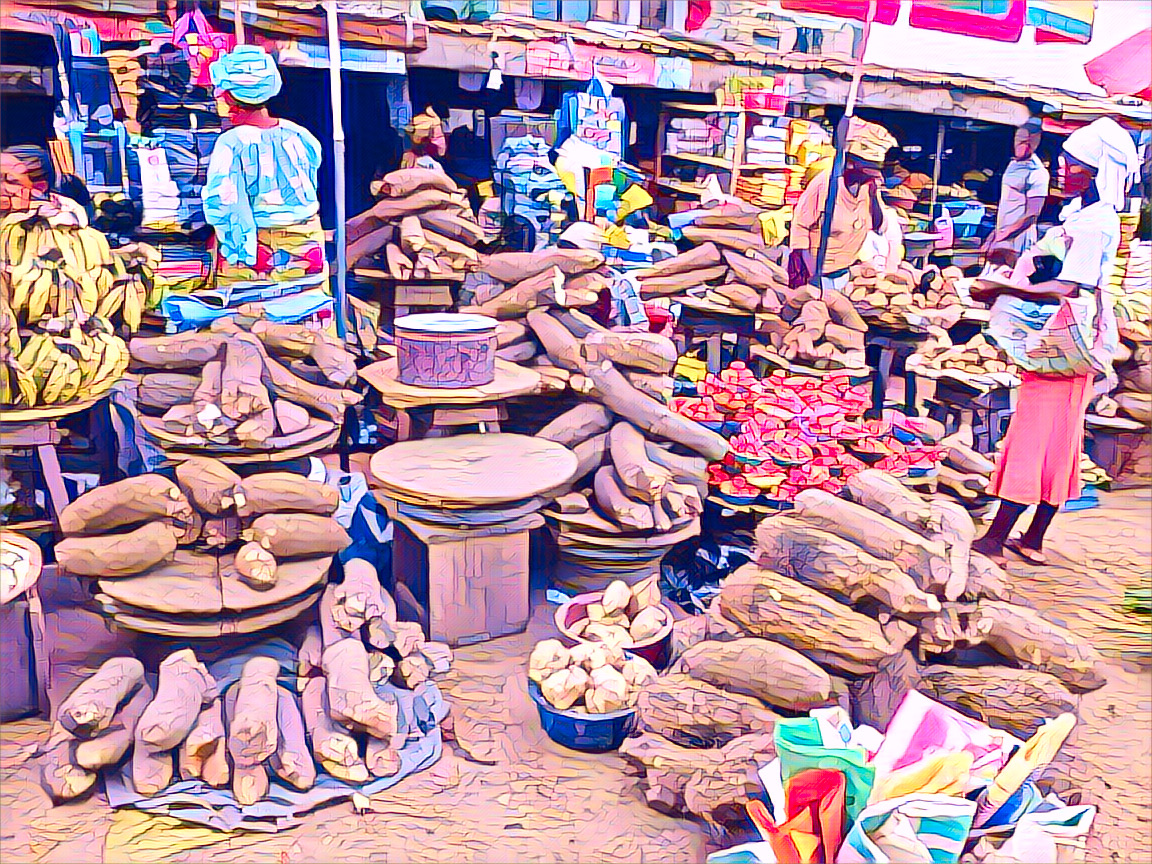Despite being the global leader in yam production, Nigeria is currently facing a severe shortage of this staple food, impacting average households who now see yam as a luxury item. As a result, many Nigerians are struggling to afford this essential carbohydrate source, highlighting a significant shift in its accessibility and affordability.
Historically, yams have been a primary source of nourishment and a cultural symbol across Nigeria. They are celebrated in festivals and featured prominently in both daily meals and special occasions. However, recent months have witnessed a stark decrease in yam availability due to various factors including reduced farm outputs and escalating inflation, which have driven prices to unprecedented levels.
In Lagos, the situation is particularly grim with prices soaring dramatically. For example, a sizeable yam tuber that sold for between N300 and N400 in May 2023, now fetches between N1,600 to N1,700. Similarly, in Ogun State, the cost of a dozen medium-sized tubers has nearly doubled from about N7,000 to between N15,000 and N17,000.
This surge in yam prices is reflected in the national inflation rates, with the National Bureau of Statistics (NBS) reporting a significant rise. The overall inflation rate rose to 33.2% in March 2024, with food inflation reaching a staggering 40.01%. This dramatic increase is largely due to the rising costs of staple foods like yam, alongside other essential items such as garri, millet, and cassava flour.
The reduced availability and high costs are making it increasingly difficult for vendors and consumers alike. For instance, a yam seller at the Ile-Epo Market in Lagos lamented the challenges of maintaining profitability under such conditions. The rising wholesale prices make it nearly impossible to achieve a reasonable margin, pushing many to consider leaving the yam trade altogether.
The irony of this situation is severe, considering Nigeria’s status as a leading yam producer, contributing 70-76% of the world’s yam output according to the Food and Agriculture Organization (FAO). Despite this, internal issues such as insufficient farm mechanization, insecurity, and lack of adequate government support hamper production capabilities.
Insecurity, particularly from herders/farmers clashes, has significantly impacted yam production, as many farmers have been displaced to Internally Displaced Persons (IDPs) camps, abandoning their lands and livelihoods. This reduction in farming activity is contributing to the scarcity and is being felt across the country.
The potential threat of yam imports from countries like China looms as a possible future scenario if domestic challenges persist, which could further undermine the local yam market and exacerbate economic difficulties for local farmers.
Industry stakeholders emphasize the need for governmental intervention to stabilize yam production. This includes providing security, agricultural inputs, and financial support to empower farmers to increase yields and make farming a viable and profitable venture once more. Mechanizing the production process could also play a crucial role in addressing the labor shortages and inefficiencies in traditional farming methods.
Furthermore, experts advocate for a thorough analysis of the Yam supply chain to identify and address cost-driving factors effectively. This could involve the introduction of innovative farming techniques like ridge planting, which could be more efficiently mechanized to boost production without the intense labor traditionally required.
As the situation stands, the availability and affordability of yams in Nigeria remain a pressing concern. With the FAO predicting a severe food crisis affecting millions of Nigerians in the coming months, urgent actions are needed to avert further hardship and ensure food security for the nation.
The crisis exemplifies a broader challenge of managing agricultural resources in Nigeria—a country rich in agricultural potential yet struggling to feed its population adequately. Addressing these issues will require a concerted effort from all stakeholders to develop sustainable solutions that can revive the yam market and restore its role as a staple food in Nigerian households.
Source: The Guardian


